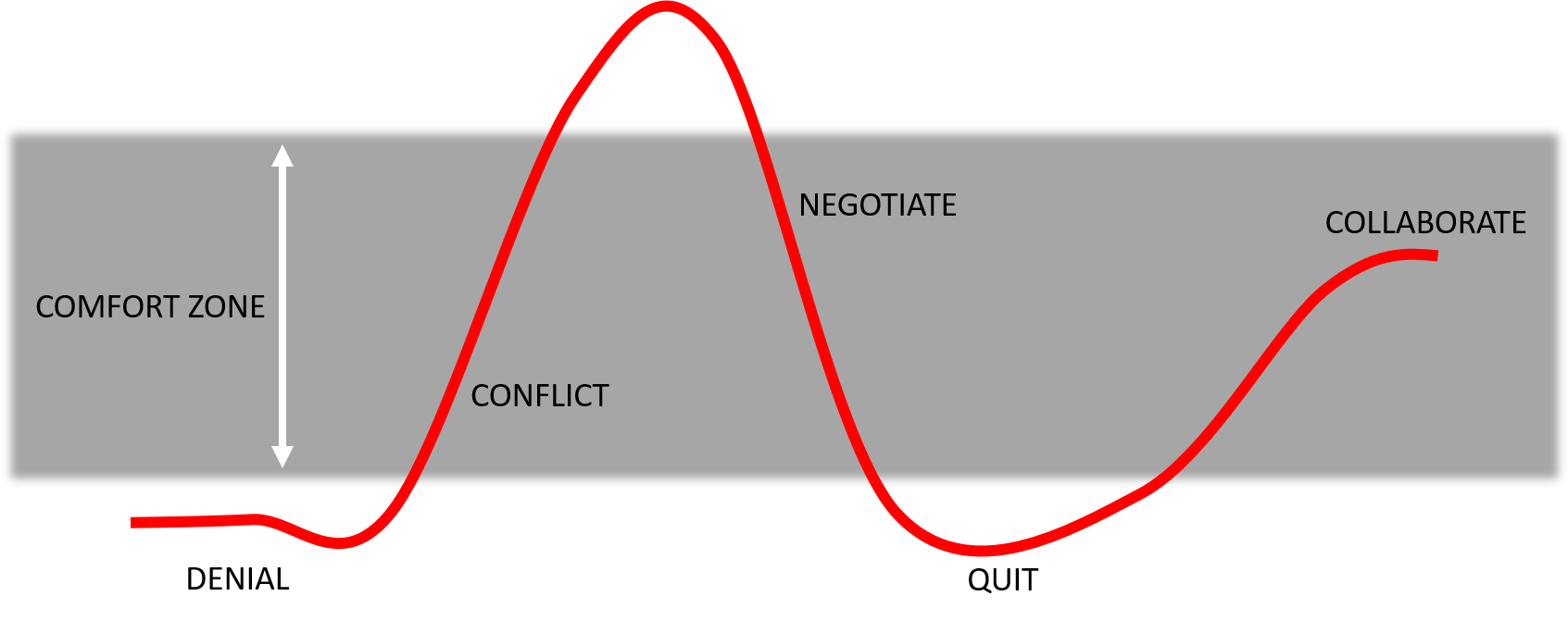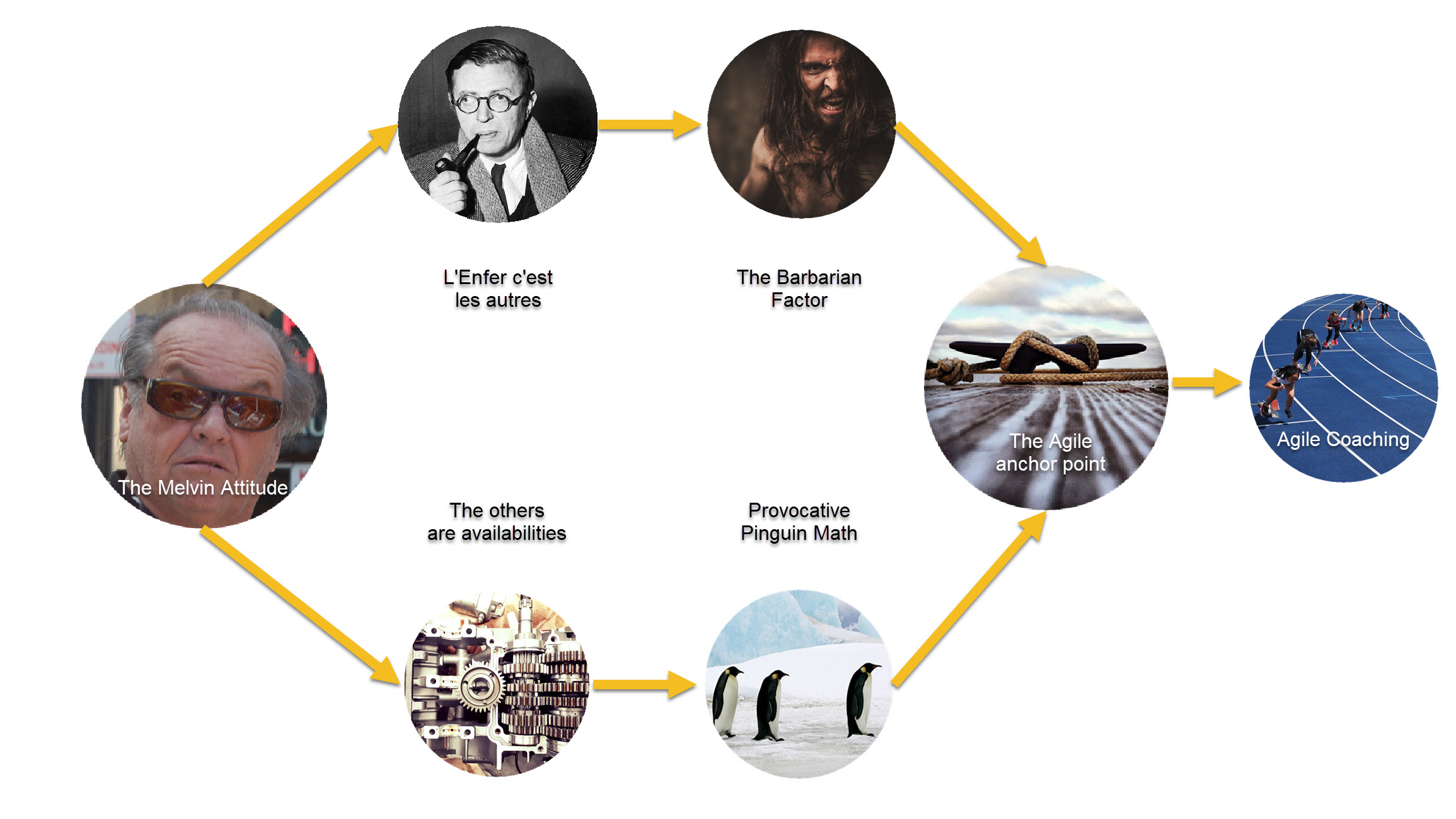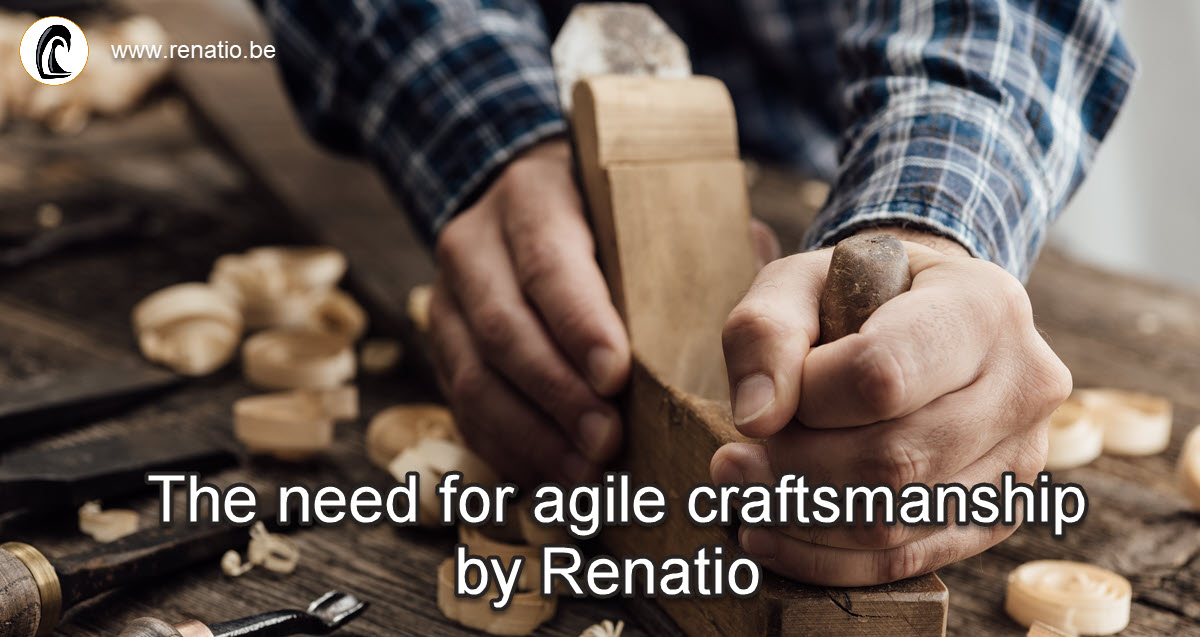The need for agile craftsmanship (Pt 4 / 4)
Posted by Jan Bovend'aerde in Agile on 14/04/2020


The need for agile craftsmanship:
- Episode 3: The Melvin attitude
- Episode 4: The pleasant way
Episode 4: The pleasant way
CHANGE MANAGEMENT
People go through 5 phases of resistance to change.

In the first step of denial, our Melvin is in a meeting reading his emails . Once the provocative pinguin figure comes on the table, the tension rises. It might become a conflict. After a while we cool down to a negotiation phase . This is for example the phase in which the developer negotiates on the figure of 25% delivery (see previous episode 3: The Melvin attitude).
Until then there has been a lot of interaction. So this is good because it invites the team to collaborate.But if this does not lead to a satisfactory result, it can pull the team apart. Some may withdraw from the discussion (quit). We should pay attention never to get into that point of utter depression. However, the intended collaboration (step 5) will always be preceded by denial, conflict and negotiation. Even a team that has been working together for a long time, goes through these phases.
It is important that the emotions never go outside the comfort zone, otherwise the team will fall apart.
Yet, on the other hand, this tension is also healthy. The comfort zone expands with every problem solved by the team.
We’re developing a cross-functional team by carefully exposing them to their own problems.
The pleasant way
For completeness sake, we mention that there is also a pleasant way to establish an agile anchor point. This is nicely illustrated in a scene from the same film as good as it gets.
Melvin admits at one time that some people are not availabilities. They actually make him want to be a better man.
Wanting, the word is important.Heidegger pointed out in his article that man who considers others as availabilities, eventually deprives himself of his own humanity.
Surrounded by lifeless objects you tend to feel empty and alone. Indeed most people want to spend their day in a pleasant and creative way.
So if this ambition occurs in professional life we have an opening to the better man behind Melvin.
Yet in too many trainings we start from this assumption and ignore the reality that we’re all more Melvin than we realize. If we count on the pleasant way to happen, we will be quickly demotivated in our colleagues and in ourselves.
Nevertheless let me tell you one inspiring story where this actually occurred.“A colleague said he once led a team that worked 10 to 12 hours a day. One day he met the woman of his life. He realized that the relationship would stop if he continued to work the same long hours. He then decided to reorganize his work to an assignment from 9 to 5. He called his team together and presented his plan.
They agreed to pursue this goal together; finish work at 5 pm and go home. Every day they held a meeting in which someone made a proposal. A lot of work proved useless and was abolished.
They were very open with other colleagues about their intention. Their objective (at 5 p.m. home) commanded respect. They got smooth cooperation from IT and other departments.
Within a period of 2 months, the entire team was able to close the books at 5 pm.”
It happens that people find a common sense reason to collaborate. Most of the time it requires a good motivation in both professional and private life. A lot of companies are experimenting with other organizational forms – like sociocracy. These organizations aim to bring the full person into the company, hoping that this will trigger collaboration on both a professional and personal level.
If this happens, the craftsman is no longer needed. It’s time for the agile coach to step in.

The Agile craftsman, a summary
Like any good craftsmanship you put most of the work into the preparation. We call it groundwork; doing some real work, put problems on the table and trigger the relevant discussions. Agile-on-speed teams start too quickly with the implementation of new working methods. They concentrate on the right side of the path: do the right things in the right way.
The agile craftsman searches for a foundation in the existing organization. For that purpose he also uses standard agile methods. But his focus is on making the old ways visible and tackle their issues. He has no problems going along the old ways of which he knows they will not work.
This doesn’t mean that there is no need for an agile coach. Once the pre-requisite of a cross-functional team is established, further agile coaching is required. Knowledgeable coaches can then create the value they are otherwise never solicited for.
An Agile coach needs somebody who knows the agile target but also has boots on the ground. These boots need to have done some walking to be effective. An agile craftsman is knowledgeable in agile and also has extensive experience in delivering software. Without that in-depth knowledge he cannot challenge Melvin with figures and difficult meetings.
The collaboration between agile craftsmen and agile coaches is a necessary next step towards sustainable agility.
Article series about Agile craftsmanship:
- Episode 1: The Agile Craftsmanship (07.04.2020)
- Episode 2: Agile groundwork (14.04.2020)
- Episode 3: The Melvin attitude (21.04.2020)
- Episode 4: The pleasant way (28.04.2020)
“Define business value in agile”

